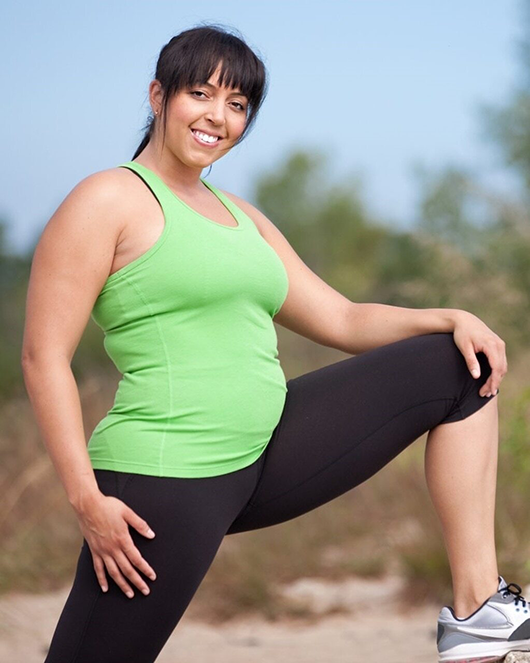Lifestyle Tips for Managing Lymphedema
Nov 3rd, 2020
Lymphedema is a common side effect of breast cancer treatments and surgery. Lymph nodes are often removed or lose their ability to function, affecting the body’s flow of lymph fluid. Breast cancer survivors often find themselves diagnosed with the condition, and, unfortunately, there is no known cure. However, there are several effective ways to manage lymphedema symptoms to lead a more comfortable life.
By learning how to manage your lymphedema, you gain more control over your life, and you’ll be able to participate in the activities you love. Here are our tips for understanding and managing the symptoms of lymphedema.

Know the Symptoms of Lymphedema
Lymphedema affects your lymphatic system, a crucial part of your circulation and immunity, leading to excessive lymph fluid build-up in areas of the body. For breast cancer survivors, this build-up most often occurs in the upper extremities but can also be found in the breasts, underarms, abdomen, chest, and back. In some instances, it can also develop in the legs, neck, and face.
You can experience a whole range of symptoms with lymphedema, including:
- Constrictive feeling in your hand, arm, breast, or underarm
- Decreased range of motion or flexibility
- Varying degrees of pain, aching, or discomfort
- Feelings of heaviness or fullness
- Noticeable swelling or puffiness
You can take matters into your own hands by learning to manage your lymphedema and alleviating symptoms. Here
are five lifestyle tips to help you get started.1. Eat a Healthy DietEating a healthy diet will lead you to better health and more energy. For those with lymphedema, a healthy diet can also help reduce inflammation, swelling, and fluid retention.Focus on a balanced diet filled with fruits, vegetables, whole grains, and fish. Also include lean protein, like turkey, chicken, tofu, or eggs. While you may consider cutting out proteins or lowering your intake, you’ll benefit more from eating lean proteins, which provide important amino acids for the body.Avoid high sodium foods, processed foods, and sugary desserts. Limit or avoid alcohol, as well. These can all
contribute to fluid retention.
As part of eating a healthy diet, you’ll also maintain a healthy weight, regulate your blood pressure, and boost your immune system, which helps decrease your risk of infection due to lymphedema.
Start an Exercise Program
To stimulate lymph fluid, start exercising. The safest way to get started is to consult with your doctor and physical therapist to design an exercise program that will be most beneficial for you.
Your exercise program should contain aerobic exercise, stretching, and strength training. Improving circulation and lymph flow will be critical factors in the types of exercises chosen.
Once you know the exercises to help manage and relieve symptoms, it's up to you to keep them up. Once you start and realize how much better you feel, and your confidence increases, exercising will become a regular part of your routine.
Stay Hydrated

Staying hydrated is beneficial for numerous health conditions, including lymphedema management. While you have excessive fluid build-up, staying hydrated tells your body it's okay to release excess fluids, removing lymph fluid, and cleansing your body. Take a reusable water bottle with you everywhere you go, and take small sips of water throughout the day.
Avoid taking any diuretics to help with fluid removal, however. While they often work for other conditions, they are not recommended for lymphedema patients. Caffeine and alcohol also need to be avoided as much as possible as they act as diuretics in the body as well.
Use Compression Therapy

Compression therapy is another way you can manage your condition as part of your home care regimen. Treatment requires you to wear compression garments on the affected area, which provide a constant level of pressure to regulate blood flow, helping to move lymph fluids away from the affected limb and around the body.
Compression therapy for Lyphadema can include socks, sleeves, bras, and leggings. With compression garments from MastectomyShop.com, you don’t need to sacrifice style for comfort. Feel pretty and manage swelling due to lymphedema by wearing these Juzo Soft Print Compression Leggings. They come in a wide range of gorgeous patterns and feature a lightweight, flexible fabric that provides 15-22mmHg of pressure.
Try Massage Therapy
Massage therapy can also help move lymph fluid from the body. Schedule regular appointments with certified lymphatic drainage massage therapists, or learn self-massage techniques you can do at home.
Get High-Quality Compression Garments from MastectomyShop.com
Lymphedema following mastectomy surgery cna prolong your recovery and impact your quality of life. The more you know about the condition and how you can manage it yourself, the more comfortable you will be. Making changes to your lifestyle will benefit your health, your attitude, and your energy levels.
For premium compression garments from a range of trust brands, explore MastectomyShop.com, or call us at (877) 413-2272.



